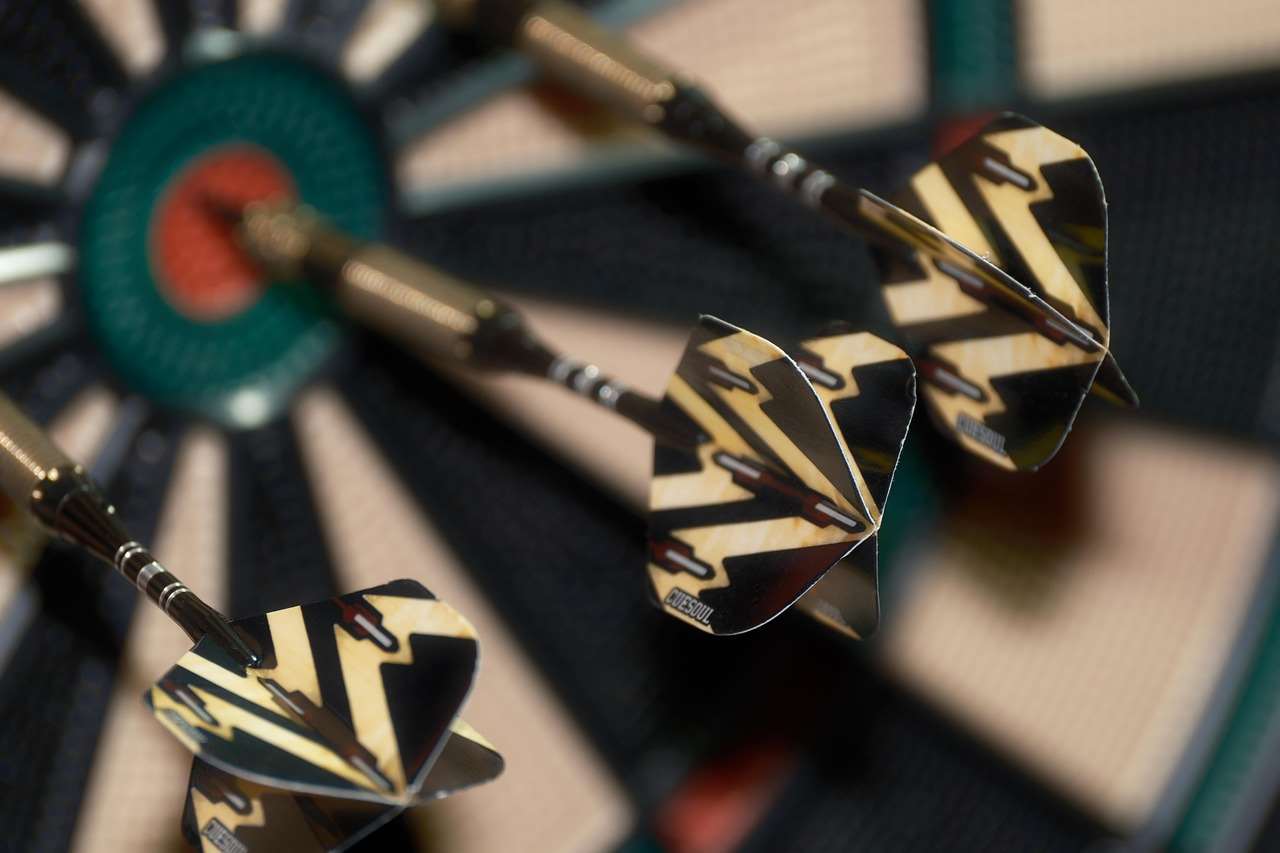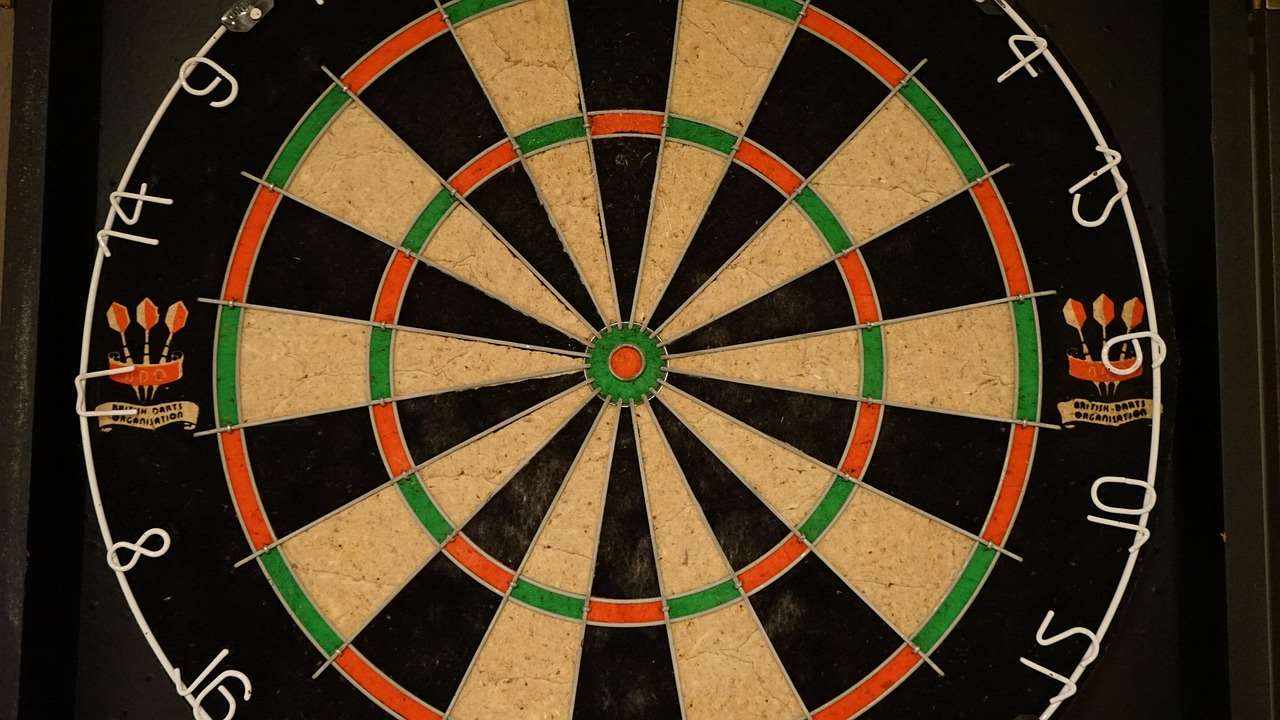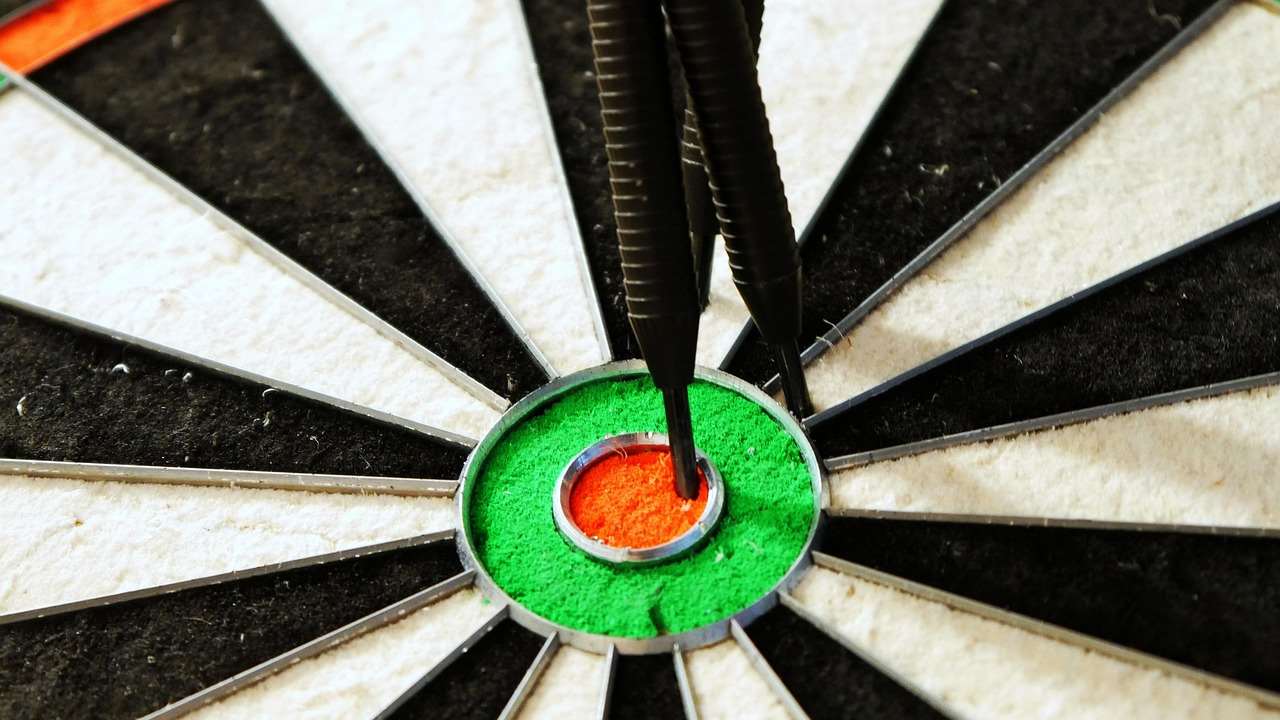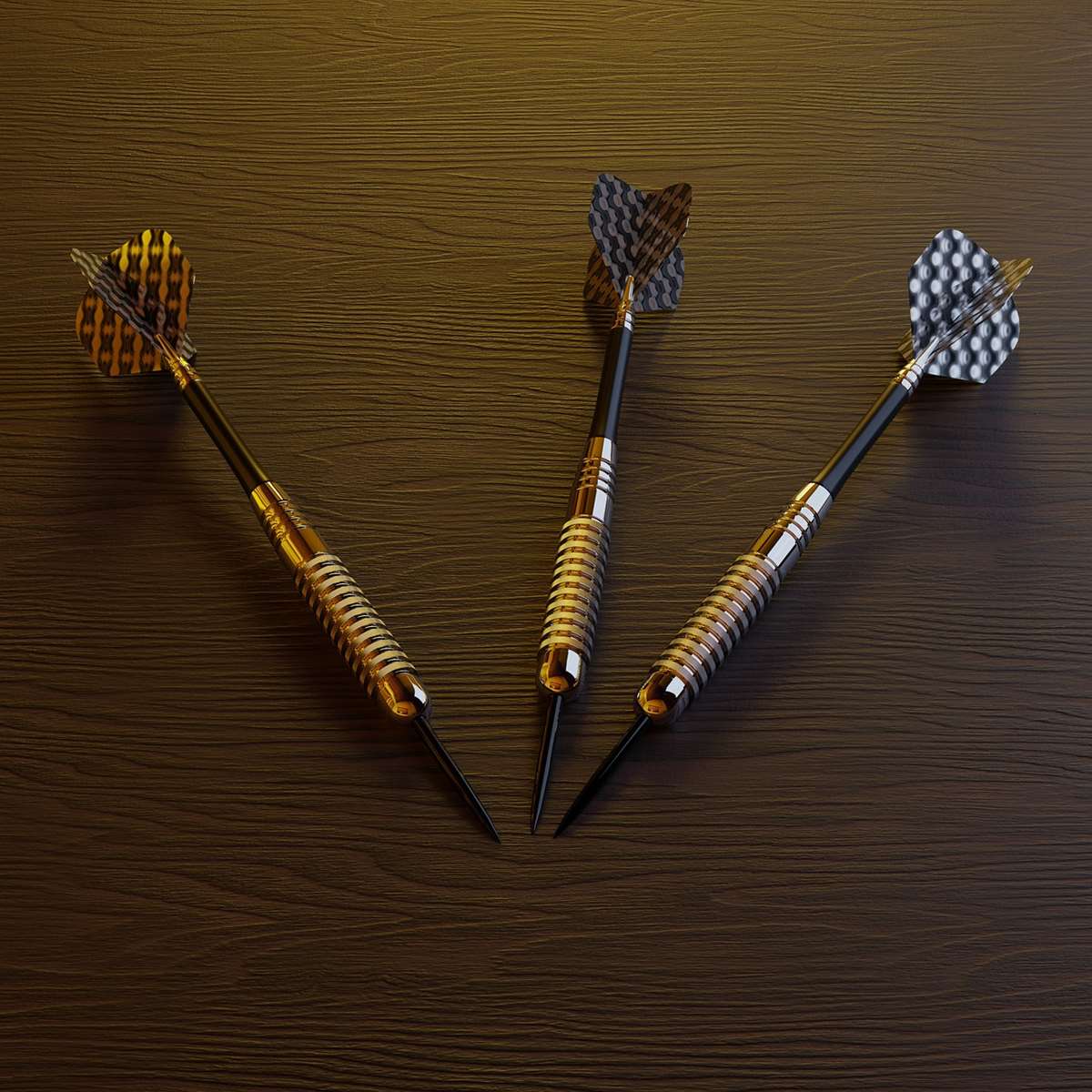The secret to how to improve doubles darts lies in consistent practice and targeted strategy. This article will equip you with drills, mindset adjustments, and technical tips to boost your doubles percentage and become a more formidable player on the oche. We’ll cover everything from stance and grip to aiming techniques and pressure management.
⚠️ Still Using Pen & Paper (or a Chalkboard)?! ⚠️
Step into the future! The Dart Counter App handles all the scoring, suggests checkouts, and tracks your stats automatically. It's easier than you think!
Try the Smart Dart Counter App FREE!Ready for an upgrade? Click above!
Why Doubles are Crucial to Dart Success
While scoring big numbers is important, consistently hitting your doubles is what separates good players from great ones. Every leg of darts ends on a double, so mastering them is essential for winning matches. Neglecting your double checkout skills means throwing away scoring opportunities and handing the advantage to your opponent. A strong doubles game provides the foundation for competitive play.
Consider a scenario: you’ve scored heavily and left yourself with an easy finish, like 40. But if you repeatedly miss double 20, your opponent has time to catch up and potentially steal the leg. This highlights the importance of reliable doubles finishing for overall success.

Mastering the Fundamentals: Stance, Grip, and Throw
Before diving into specific doubles strategies, it’s important to solidify your basic throwing mechanics. This includes your stance, grip, and throw. These elements form the bedrock of your accuracy and consistency. You must master all of these to **improve your doubles darts performance**.
Stance
Experiment with different stances to find one that feels comfortable and balanced. Common stances include:
- Straight Stance: Facing the board directly.
- Angled Stance: Positioned at an angle to the board.
- Sideways Stance: Standing perpendicular to the board.
Your stance should allow you to maintain a stable base and a clear line of sight to the target. Ensure your weight is evenly distributed to avoid swaying during your throw. For more info on finding your best setup, check out measuring darts oche
Grip
The grip is a matter of personal preference, but it’s crucial to maintain consistency. Here are some common grip styles:
- Pencil Grip: Holding the dart like a pencil.
- Power Grip: Using all fingers to grip the dart firmly.
- Loose Grip: A relaxed grip allowing for a smoother release.
Avoid gripping the dart too tightly, as this can lead to tension and inaccuracy. Find a grip that allows you to control the dart without restricting your throwing motion. One of the most important aspects of finding a great grip is testing and tweaking.
Throw
A smooth, repeatable throwing motion is key to consistency. Break down your throw into these stages:
- Setup: Position yourself and focus on the target.
- Drawback: Bring the dart back in a controlled manner.
- Forward Motion: Accelerate the dart towards the target.
- Release: Release the dart smoothly and follow through.
Avoid jerking or snatching the dart, as this can disrupt your accuracy. Focus on a fluid motion that allows for a consistent release point. Practicing your throw repeatedly will help you develop muscle memory and improve your consistency. Some players practice in the darts clear zone to hone their skills.

Targeting Strategies for Doubles
Knowing which doubles to target and when is a critical part of how to improve doubles darts. Here’s a breakdown of common strategies:
The ‘Around the Clock’ Drill
This classic drill involves throwing at each double in numerical order, starting with double 1 and progressing to double 20. This helps you develop accuracy on all the doubles around the board and improve your overall **doubles proficiency**. This is an important drill for those trying to improve their scoring.
Focus on Key Doubles
While it’s important to practice all doubles, some are more frequently used in checkouts than others. Prioritize practicing these key doubles:
- Double 20 (D20): Used for finishing scores like 40 and 60.
- Double 16 (D16): Crucial for finishing scores like 32 and 48.
- Double 12 (D12): Important for finishing 24.
- Double 8 (D8): Used for finishing 16.
- Double 4 (D4): Used for finishing 8.
Mastering these doubles will significantly improve your checkout percentage.
Setting Up Your Finishes
Think strategically about setting up your finishes. Instead of always going for the highest possible score, consider leaving yourself on a comfortable double. For example, if you have 81 left, aiming for the single 17 will leave you on double 32 which is a relatively easy finish compared to a trickier single/double combination.

Effective Practice Drills for Doubles
Consistent practice is the cornerstone of how to improve doubles darts. Here are some effective drills you can incorporate into your training routine:
The ‘Double In, Double Out’ Game
This game simulates a real match scenario. Start each leg by having to hit a double to begin scoring. Once you get down to a checkout score, you can only win by hitting a double. This drill will help you become more comfortable with both starting and finishing on doubles.
The ‘Shanghai’ Drill for Doubles
In this drill, choose a number (e.g., 20). Your goal is to hit the single, treble, and double of that number in three darts. This drill helps you develop accuracy and control when targeting specific segments of the board.
High Score Doubles Challenge
Give yourself a certain number of darts and try to get the highest score only hitting doubles. This will force you to make every dart count and focus on doubling effectively. You can even use an Automatic dart scoring app to track your score.

The Mental Game: Focus and Pressure Management
Darts is as much a mental game as it is a physical one. Maintaining focus and managing pressure are crucial for hitting those all-important doubles. Here are some tips:
Develop a Pre-Throw Routine
Establish a consistent pre-throw routine to help you focus and calm your nerves. This could involve taking a deep breath, visualizing the target, or performing a specific movement. A well-defined routine will help you stay grounded and maintain consistency even under pressure.
Visualize Success
Before each throw, visualize the dart hitting the double. This mental rehearsal can boost your confidence and improve your accuracy. Positive visualization helps you approach each throw with a clear and focused mindset. Positive reinforcement can greatly assist with improving your game.
Learn to Manage Pressure
Pressure is inevitable in competitive darts. Develop strategies for managing it effectively. This could involve focusing on your breathing, reminding yourself of your training, or breaking down the situation into smaller, manageable steps. Remember that everyone experiences pressure, and learning to cope with it is a sign of resilience.
If you fail to hit the double, dont get discouraged. Just continue on your next turn and keep a clear head. If you’re thinking about nine dart finish today or similar, it can lead to missed attempts.

Equipment and Maintenance
Having the right equipment and maintaining it properly can also contribute to how to improve doubles darts. Here’s what to consider:
Dart Weight and Style
Experiment with different dart weights and styles to find what feels most comfortable and suits your throwing style. Heavier darts may provide more stability, while lighter darts may offer more finesse. Different barrel shapes and grip patterns can also affect your control and release. If you play darts game xbox series s you can test out some styles that you may have been too nervous to try beforehand.
Flights and Shafts
Flights and shafts play a crucial role in dart stability and trajectory. Experiment with different shapes, sizes, and materials to find what works best for you. Flights affect the dart’s aerodynamic properties, while shafts influence its balance and length. Regular replacement is essential to maintain consistent performance.
Dartboard Maintenance
Keep your dartboard in good condition by rotating it regularly to distribute wear evenly. This will prevent certain segments from becoming overly worn and affecting your accuracy. Also, remove any loose fibers or debris from the board to ensure clean dart entry.
Conclusion
Mastering how to improve doubles darts is a journey that requires dedication, practice, and a strategic mindset. By focusing on the fundamentals, developing effective practice routines, and managing the mental game, you can significantly improve your checkout percentage and become a more formidable darts player. Remember to stay consistent, be patient with your progress, and always enjoy the process of improvement. Now, grab your darts, put these tips into practice, and start hitting those doubles!
Hi, I’m Dieter, and I created Dartcounter (Dartcounterapp.com). My motivation wasn’t being a darts expert – quite the opposite! When I first started playing, I loved the game but found keeping accurate scores and tracking stats difficult and distracting.
I figured I couldn’t be the only one struggling with this. So, I decided to build a solution: an easy-to-use application that everyone, no matter their experience level, could use to manage scoring effortlessly.
My goal for Dartcounter was simple: let the app handle the numbers – the scoring, the averages, the stats, even checkout suggestions – so players could focus purely on their throw and enjoying the game. It began as a way to solve my own beginner’s problem, and I’m thrilled it has grown into a helpful tool for the wider darts community.